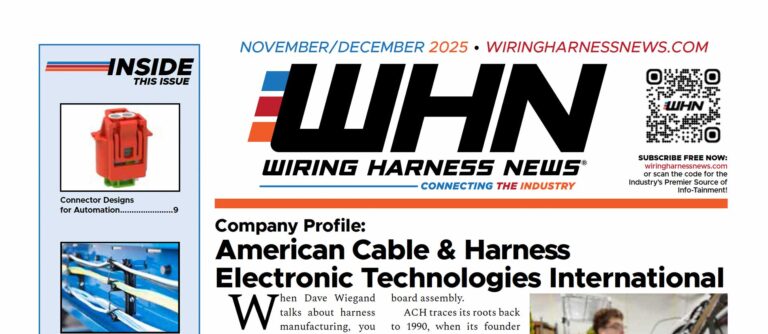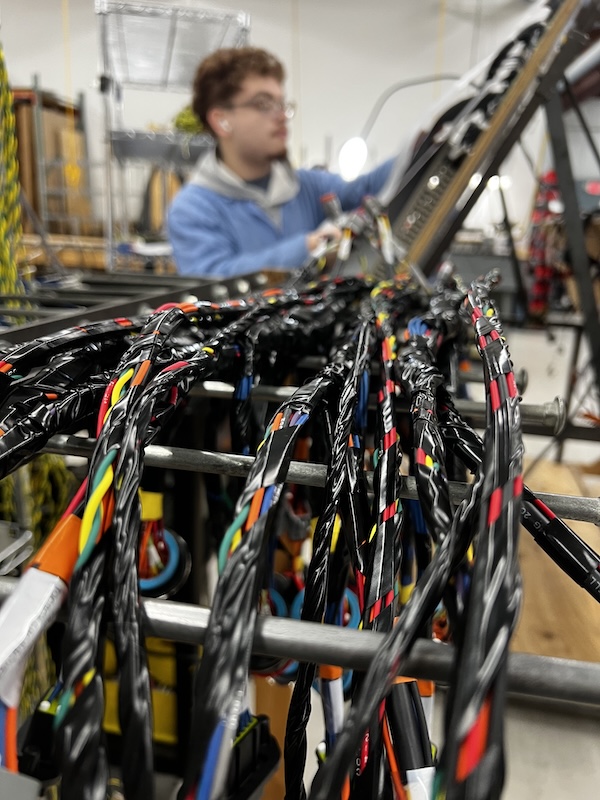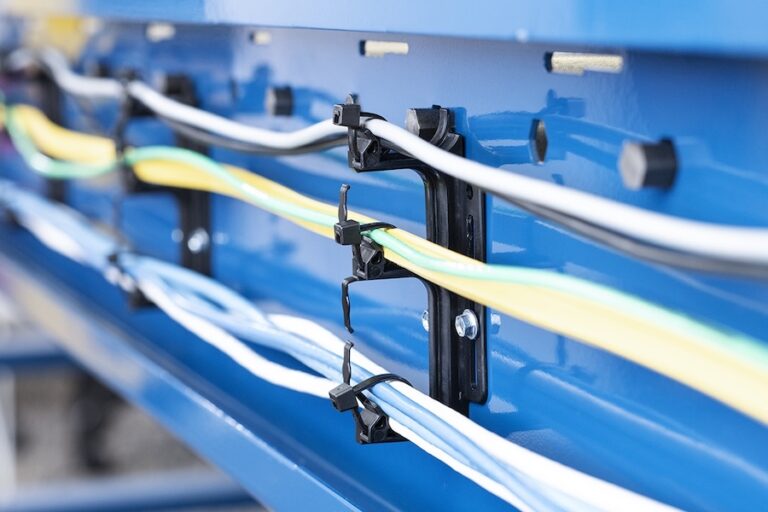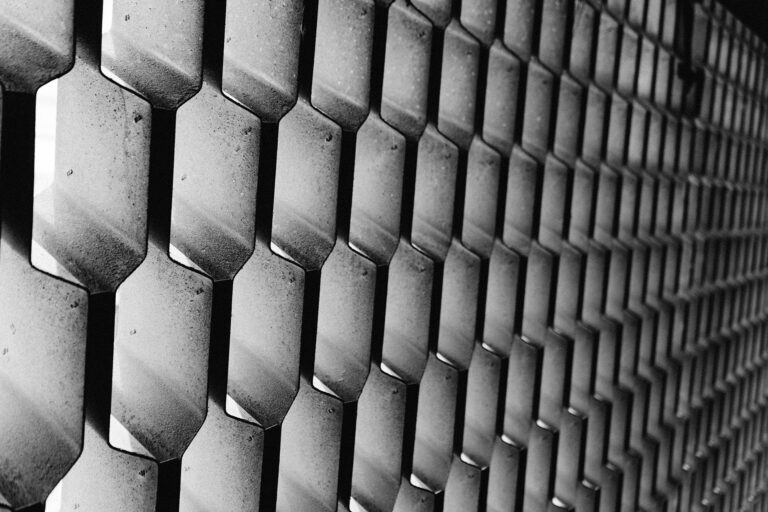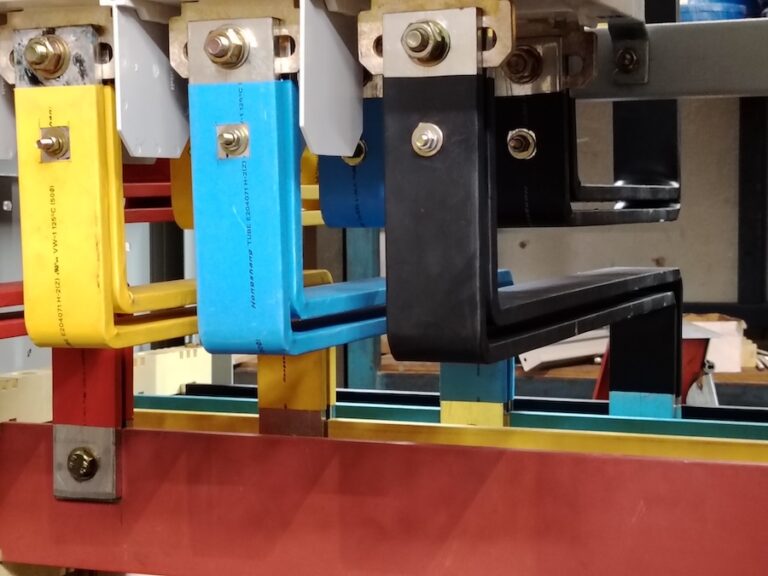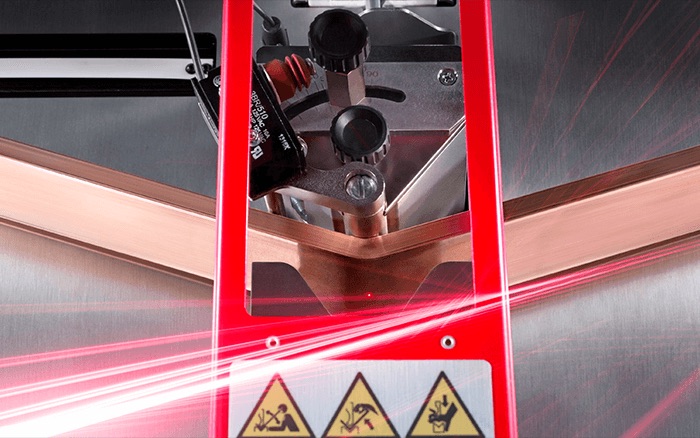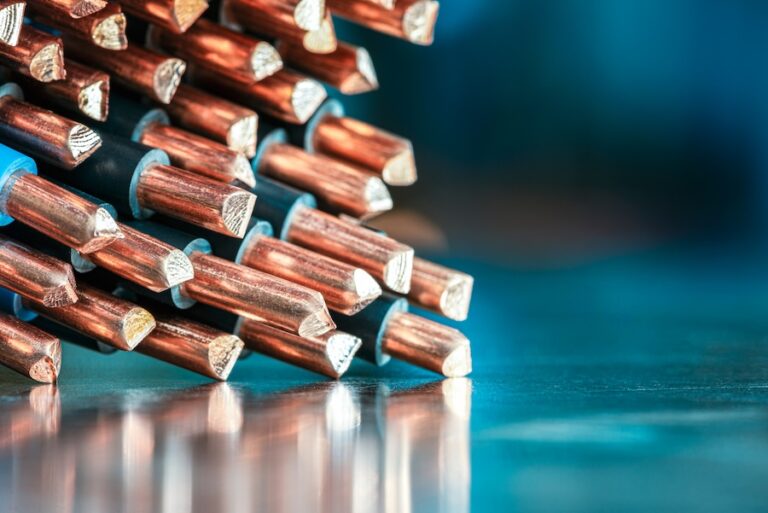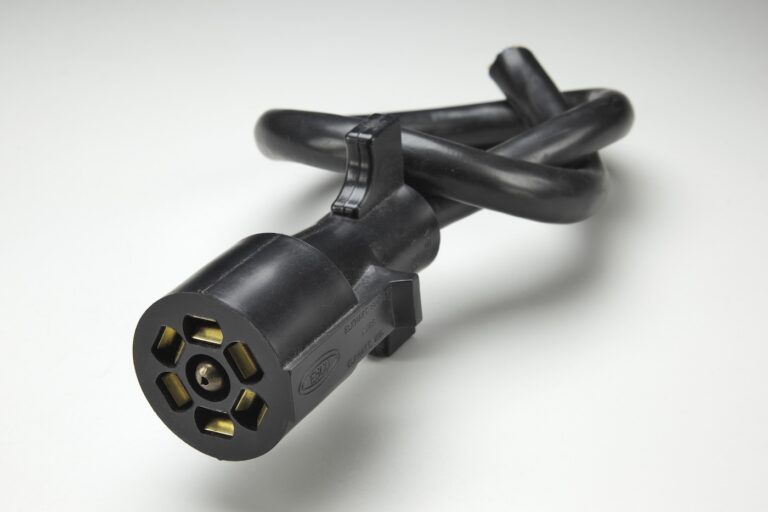Expanded Applications for Flat Cables:
Innovative designs justify replacement of round cable replacement.
Flat cable has been around for about 60 years. Cicoil invented the ribbon cable for IBM computers in 1956 (Figure 1). Over the decades, it has been a favorite in high-end computing, military and aerospace, robotics and motion control devices. Its advantages include superior flexibility, electronic noise abatement, and packaging efficiency. The limiting factor over this time has been the need for unique termination techniques—prepping for connectors has largely required hand work. Later in this article a new type of flat cable will be introduced that promises to overcome many of these production logistics issues. It was developed by Cicoil Corporation and it opens the potential for engineers to capitalize on flat cable advantages, while utilizing the common cable prep tools and automated processes currently in use with round cables. But first, let’s take a look at some of the reasons flat cable should be considered in the design phase.
Figure 1: Early ribbon cables in IBM computers circa 1956
Ten top reasons to use flat cables.
- Reliability – The simplicity of flat cable with its parallel conductor geometry eliminates many of the common sources of wiring errors and malfunctions. Conductors are registered one-to-one with the terminating connector or board so proper contact assignment is almost automatic.
- Weight reduction – The use of flat cable often eliminates much of the conventional wire weight. Such things as redundant insulating materials, fillers and tapes are unnecessary. In addition, the composite flat cable construction is mechanically strong enough to eliminate the need to include large conductors for strength. The copper cross-section can thus be reduced to only that necessary to carry current loads or to satisfy voltage drop requirements.
- Space efficiency – Elimination of unnecessary insulation, fillers, and tapes reduces the bulk and physical volume of flat cables. Additionally, their low profile enables flat cables to hug surfaces and take advantage of tight or normally unused space. A rectangular cross-section lets flat cables stack or layer with almost no wasted space between cables, providing maximum conductor density for a given volume.
- Flexibility – Flat cable is extremely flexible when bent in the plane of its thin cross-section. This flexibility has been used in applications where continuous or high flexing is necessary, as in drawers, doors, rotating arms, and so forth.
- Greater strength – Flat cables have high strength because all conductors and insulators equally share tensile loads.
- Consistent electrical qualities – The conductor spacing is fixed and the geometry of the cable is constant. This geometry brings consistent electrical qualities that include impedance, capacitance, inductance, time, delay, crosstalk and attenuation.
- Greater current-carrying capacity – Flat cables have greater surface-to-volume ratios than their round-cable counterparts. Consequently, flat cables dissipate heat more efficiently. This thermal efficiency lets them handle a higher current level for a given temperature rise and conductor cross-section.
- Reduced skewing effects – Conductors have the exact same physical and electrical length and a consistent and continuous dielectric. This minimizes time delays between signals within a given flat cable.
- High-density interconnections – Flat cable has a high wire-to-cable cross-sectional density. So layers of flat cable pack more efficiently and provide a higher conductor density than in round cables.
- Ease of handling – Flat cable folds and bends readily, conforms to the mounting area, fastens easily with clamps, adhesive, or double-faced tape, eliminating the installation and lacing difficulties associated with round wire cabling. Conductors are visible and in a fixed position within the dielectric, a factor that simplifies coding, inspection, and circuit tracing.
Flat vs Round
Most cable is round, which is a generally useful geometry. Examine a typical round electrical cable and you’ll find insulated wires in a bundle surrounded by several layers of other “filler” material (Figure 2). These layers are there to retain a round profile, and to minimize frictional heating as the cable moves. Surrounding the wires and fillers is an outer jacket that holds it all together, and provides some level of protection against outside elements. While round cable is normally fine for general use, there are drawbacks with this construction.
Figure 2: Typical Round Cable Elements
Because round cables incorporate these multiple layers of wires, insulation, and fillers, heat dissipation from the wires can be problematic. Despite measures to reduce it, there is still frictional heat produced inside the cable during repetitive motion cycles. There is also the issue of electrical impedance alteration as conductors inside the cable move relative to one another.
With flat cables, each conductor is kept parallel with neighboring conductors to form a flat profile. Unlike round cable, conductors in flat cables don’t move within the encapsulating jacket, so their electrical qualities remain constant. Similarly, the conductors in the cable all have the same physical and electrical length. This means that signal skewing, and differential time delays between signals in the cable, stay at a minimum.
Flat cable, isolates each conductor within the cable, keeping them stable and stationary. The result is that they need no low-friction tapes or fillers. This has the added advantage of reducing both weight and volume, which provides maximum packaging efficiency. And the greater surface to volume ratio of the flat form factor also dissipates heat far better. The larger surface area and heat dissipating capability enables flat cables to carry a higher current for a given temperature rise, and for conductors of a given cross section.
Furthermore, the flat form factor means that within the plane of its thin cross section, flat cables exhibit far more inherent flexibility than equivalent round cables.
Ultimately, where signal-to-noise purity, flexibility, heat, weight and volume efficiencies are paramount, flat cables have better inherent performance values than found in round cable. Until now round cable deficiencies have been tolerated, and engineered around, because it is very common, and tooling exists for efficient terminating and assembly. Fortunately, a new generation of flat cable has been developed that combinesease of usewith an already-impressive set of inherent advantages, and makes it possible to consider designing with flat cable instead of round versions for many applications.
Cicoils EZ-Flexx™
A flat cable has been designed by Cicoil that finally addresses the challenge of termination, which has been the main drawback of using flat cable. It’s called EZ-Flexx, and its constructed to be as easy to work with as common round cables, while also providing a long flex life, and all the other features and benefits of flat cable that were previously outlined. Ordinary manual or automated wire stripping tools can handle the stripping process. Conductors comprising an EZ-Flexx flat cable are easily split from the cable body revealing a traditional round shape for common terminating techniques. The process is straightforward: Split out the individual conductors in the cable, strip the outer jacket from the end of the conductors, strip the inner conductor insulation, and apply the connector in the usual way.
It is useful to understand the capabilities of modern EZ-Flexx flat cable by examining some older flat cabling technologies.
As noted earlier, the flat ribbon cable was introduced by Cicoil in 1956 for early mainframe computers. Ribbon cable allowed companies like IBM to replace bulky, stiff round cables with a low-profile alternative that could be terminated easily through use of insulation displacement connectors (IDCs). Ribbon cable is inexpensive and has a standard geometry.
A point to note is that ribbon cable is not really comparable to modern flat cable such as EZ-Flexx. It was not designed for repetitive flexing, as the PVC jacketing of most ribbon cables is relatively brittle (Cicoil’s IDC ribbon cables, however, feature hi-flex wires and jacketing). Plus, ribbon cables use just a single wire gauge for all conductors (28 AWG) which limits their use. And finally, ribbon cable can emit electromagnetic interference in the absence of extra shielding.
Another type of flat cable uses a simple external sheath, often of PTFE (branded by Dupont as Teflon®), to enclose bundles of conductors. Unlike ribbon cable or extruded flat cable like EZ-Flexx, wires in the PTFE jacket are not held in place within the jacketing material. They can creep from their initial position, or be pulled out of place, by forces from the terminating connections. To head off such difficulties, PTFE flat cable may employ clamps at regular intervals along the cable. PTFE jackets are also relatively brittle, and can crack with repetitive flexing, exposing the internal wires.
Another type of flat conductor technology is that of flex circuits. These are basically flexible versions of printed circuit boards. They are usually comprised of conductive traces either screen printed or plated onto, or sandwiched between, flexible plastic substrates.
The usual application for flex circuits is in forming a connection between circuit boards where space is at a premium and the geometries involved are difficult for ordinary connectors to handle. Flex circuits are generally not designed to handle repetitive motion. Moreover, because their conductors have dimensions that are on the order of circuit board traces, flex circuits have a limited ability to handle high power levels or lengthy trace runs.
Flat vs. Contoured Cable
Cicoil extruded flat cables are defined as a group of conductors (electrical, liquid or gas tubing, fiber-optics) aligned in parallel, and completely, seamlessly encapsulated in an insulating, protective jacket. Cicoil invented the patented extrusion process employed to manufacture this type of flat cable.
EZ-Flexx flat cables, consist of a variety of color-coded PFA-insulated electrical conductors, and Teflon® or polyurethane tubing elements, which are encapsulated overall within an ultra-pure, engineered rubber jacket (Figure 3).
Figure 3: Anatomy of a contoured flat cable
This proprietary engineered rubber is called Flexx-Sil™, and delivers a number of useful properties. The distinguishing feature of EZ-Flexx flat cable is the combination of round-profile conductors extruded with a Flexx-Sil encapsulation that maintains the individual round wire form factor needed for common hand and automated stripping equipment. The evolution from traditional flat cable can be seen in the profile image in Figure 4
Figure 4: Evolution from traditional flat cable to EZ-Flexx
The Flexx-Sil jacket strips easily from the PFA insulated conductors, and the PFA insulation strips easily from the conductor wires. A thin Flexx-Sil rubber strip – part of the overall extrusion – connects each of the individual elements to form the flat cable. Multiple conductor bundles can be separated out from a single cable, each terminated with their own connector (Figure 5).
Figure 5: Flexx-Sil jacket strips easily for termination of each conductor.
Each conductor is kept parallel with neighboring conductors. Unlike round cable or PTFE “sheathed” flat cable, the conductors in an EZ-Flexx cable are held securely within the encapsulating Flexx-Sil jacket and don’t move, so their electrical qualities remain constant. Virtually any type of electrical conductors required for power, signal, video and data may be incorporated into this cable. This includes bare wire, insulated and shielded conductors, twisted pair, tri-axial, and coax, etc., in sizes of 4 to 44 AWG, plus non-electrical conductors such as fiber optics and fluid tubing.
Specific Applications
EZ-Flexx flat cables work well in applications characterized by extreme environments, motion, and challenging space constraints. They are particularly durable, and advantageous where other kinds of cable fall short, like extreme temperatures ranging from -65°C to +260°C (-85°F to 500°F). In contrast, ordinary PVC cable jacketing starts to decompose when the temperature reaches 140°C (284°F), and starts to melt around 160°C (320°F).
EZ-Flexx cable excels at motion applications because the wire is extremely supple, as it is made from multiple bundles of fine 40-44 AWG base strands. This contrasts with a standard 24 AWG wire which is typically comprised of just seven, larger 32-AWG base strands, which results in a stiffer wire with larger bend radii that doesn’t stand up to repeated flexing.
Because a flat profile takes up less volume than comparative round wire when stacked or bundled, flat cable saves valuable space. And because they naturally flex in a single plane, and incorporate the durable Flexx-Sil jacketing, they often don’t need conduits or cable tracks—minimizing space, weight and noise, not to mention cost.
Composition of the New Jacketing
EZ Flexx cables are encapsulated with jackets made of material called Flexx-Sil. This engineered rubber developed for Cicoil’s exclusive use, is ultra-pure, durable, and extremely versatile. The material is extruded seamlessly around each cable element to form a single flat cable, and it is clear so the individual conductors are visible. The PFA jacket insulating each of the conductors is color coded for easy gauge size identification anywhere along the cable length.
Flexx-Sil is a remarkable external jacketing compound that provides superb flexibility while protecting conductors against sudden impact, severe vibration, and extreme G‑forces. It registers a Durometer value of 65 (Shore A); a SuperTuff™ version goes up to 85 (Shore A), and the material doesn’t wear, crack or deform when exposed to tight bending, continuous flexing or operational stress. It requires no conduit for protection, is tear resistant, and self-healing from small punctures.
Encapsulation also features long term integrity, with near zero particulates, making EZ-Flexx Cables Class 1 Clean Room rated. And it maintains flexibility and operation integrity in extreme temperatures, as already noted. Flexx-Sil has passed UL 94V-0 flammability testing.
This jacketing material is waterproof (including immersion), resists most chemicals, and operates for years in intense UV and sunlight conditions. The Flexx-Sil formulation features virtually zero impurities, zero halogen, and a strong molecular bond meeting NASA’s Spec 1124 for outgassing.
Summary
EZ-Flexx flat cable has introduced a new paradigm in flat cable design—one that reduces the need to engineer around the performance limitations of round cable. The innovative cable marries flat cable performance-enhancing attributes such as Flexx-Sil jacketing and ultra-flex, fine-stranded wire conductors, with a physical profile matching that of standard wires found in common round cable. The new technology introduces the first flat cable ready for use with industry-standard assembly tooling and presents a cost-effective solution.


